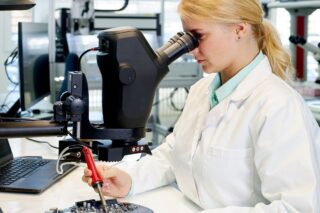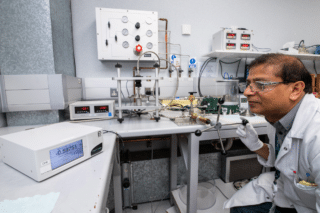Figures from McKinsey show that in 2021, China consumed 57 million tons of pork making up about 60% of the country’s total meat consumption. China alone accounts for at least 40% of global consumption. So pork in China is a big deal. An outbreak of African Swine Fever over 2018-2019 led to a loss of around half of the Chinese pig stocks. A new wave of mega-farms hopes to bridge the gap between demand and supply and help the country reach food autonomy.
Farming in China has traditionally been on a small scale and this has also been the same with the raising of pigs where the average farmer has a few animals. In contrast, the average pig farm in North Carolina, the state that produces the second largest amount of pork in the US, has over 4000 animals and some have in excess of 10,000.
Multi-Storey Pig Farms
This is however dwarfed by a new breed of Chinese pig farm. China is now building multi-storey pig farms in a number of locations. A 26-storey building in Ezhou, Hubei Province aims to produce 1.2 million pigs a year for slaughter and house 650,000 animals in its 800,000 square meters. This follows on from projects like a 21-building site in Nanyang, Henan Province, which houses 84,000 sows and their offspring, and a complex of multi-storey buildings on Yaji Mountain, Guangxi Province, with the capacity to produce 840,000 pigs a year.
Video by GLOBALin/ New China TV
Despite government guidelines calling for the halving of meat consumption by 2030, the demand for meat continues to increase. China has throughout history suffered food shortages, most recently during the Great Chinese Famine between 1959 and 1961 which left millions dead. Food security is therefore seen as paramount for China, especially as currently China can only produce around 65.8% of its food needs down from 93.6% in 2000. The Covid crisis over the last few years has also shown vulnerability in both food production and distribution.
Such factors have contributed to the high-tech solution of these new farms which often involve robots and intense monitoring of things like the pigs’ body temperature. Daisuke Wakabayashi and Claire Fu, two journalists from the New York Times reported that:
“The pigs are monitored on high-definition cameras by uniformed technicians in a NASA-like command center. Each floor operates like a self-contained farm for the different stages of a young pig’s life: an area for pregnant pigs, a room for farrowing piglets, spots for nursing, and space for fattening the hogs.
Feed is carried on a conveyor belt to the top floor, where it’s collected in giant tanks that deliver more than one million pounds of food a day to the floors below through high-tech feeding troughs that automatically dispense the meal to the hogs based on their stage of life, weight, and health.”
According to Peter Li, Associate Professor, East Asian Politics, Animal Policy & Law in China at the University of Houston-Downtown, this may be misguided:
“This enthusiasm for the so-called high-tech intensive breeding operation is in fact underlain by a false premise that is widely held in the minds of policy elites and the general public as a whole. And this false premise is that food security is somewhat linked to meat consumption.”
Companies like Yangxiang and Zhongxin Kaiwei have essentially made the farms into factories. They claim that each floor of pigs is completely isolated making infections easy to contain. Yangxiang said that they only lost a tenth of their pigs to African Swine Fever in 2020 at the Yaji plant.
Some Questions
Experts however are not convinced, Dirk Pfeiffer, chair professor at One Health at City University of Hong Kong says:
“Setting up a pig farm is not the same as setting up a factory that makes parts for iPhones since pigs are capable of transmitting infectious pathogens and amplifying their prevalence. Furthermore, the increased density of pigs and therefore increased opportunity for transmission increases the chances of mutation of these pathogens to more pathogenic variants. It is also important to ensure that antimicrobial usage for disease prevention is avoided in these units since in the case of bacteria it will increase the risk of the emergence of resistant variants.”
There may also be huge potential environmental problems from such concentrated farming. North Carolina in the US has well-documented issues from industrial pig farming but the new Chinese farms make these operations look like small holdings. Such pig farms may not be the answer China is looking for Li says:
RELATED ARTICLE
“China has achieved breathtaking food security accomplishments. A balanced diet, not a diet dominated by animal products, serves China’s long-term and strategic objective of making the country stronger, healthier, and environmentally/ecologically more progressive.”
With African Swine Fever once again going through China’s northern provinces the efficacy and security of these facilities may be tested sooner rather than later.











